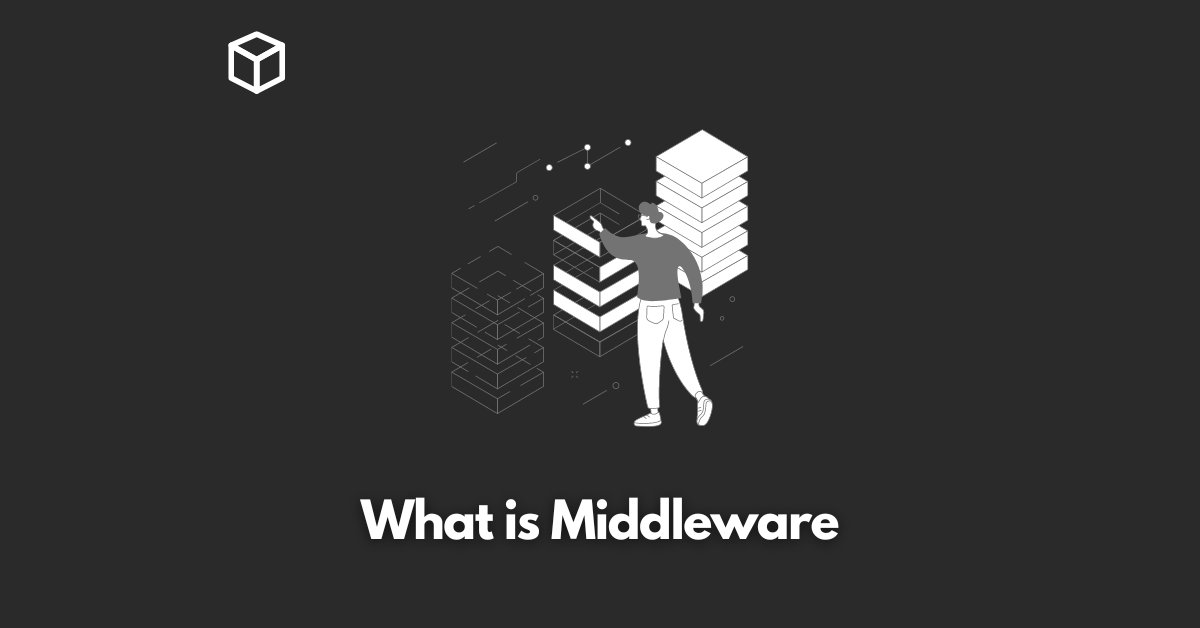Middleware is a software layer that sits between the operating system and the application in a computer system.
Its purpose is to provide a bridge between different applications and systems, allowing them to communicate and share data with one another.
There are several types of middleware, each with its own specific function.
Some examples include message-oriented middleware, object request brokers, remote procedure call middleware, and web middleware.
In this article, we will discuss the common services provided by middleware, examples of different types of middleware, and the advantages and disadvantages of using middleware.
Common Middleware Services
One of the main services provided by middleware is communication between different applications.
This allows different applications to share data and resources, regardless of the programming languages or platforms they were built on.
Another common service provided by middleware is database connectivity.
This allows applications to connect to and interact with databases, allowing them to access and manipulate data stored in the database.
Security is another important service provided by middleware.
It helps to secure data and resources being shared between different applications and systems, and can include features such as authentication and encryption.
Memory management is also an important service provided by middleware.
It allows multiple applications to access and share memory resources, improving the overall performance of the system.
Lastly, middleware also provides distributed computing services, which allows applications to be distributed across different systems, improving scalability and performance.
Examples of Middleware
One example of middleware is message-oriented middleware, which is used to send and receive messages between different applications.
This type of middleware can be used in a variety of contexts, such as in distributed systems, message queues, and publish-subscribe systems.
Another example of middleware is object request brokers (ORBs).
ORBs are used to connect distributed objects in a distributed system, allowing them to communicate and share data with one another.
Remote procedure call middleware (RPC) is also a popular type of middleware. It allows applications to make calls to remote procedures, as if they were local procedures.
This can be useful in situations where applications need to access resources or data that are located on a different system.
Web middleware is a type of middleware that is specifically designed for web applications. It can provide services such as security, session management, and routing.
Advantages of using Middleware
One of the main advantages of using middleware is improved scalability.
Middleware allows different applications to share resources and communicate with one another, which makes it easier to scale a system as the number of users or applications increases.
Another advantage of using middleware is reduced complexity.
Middleware provides a layer of abstraction, which makes it easier to connect different applications and systems, and can help to simplify the overall architecture of a system.
Middleware also increases flexibility.
As middleware allows applications to communicate and share data with one another, regardless of their programming languages or platforms, it makes it easier to integrate new applications or systems into an existing infrastructure.
Middleware also improves security.
It can provide security features such as authentication and encryption, which helps to protect data and resources being shared between different applications and systems.
Lastly, middleware improves performance.
By managing memory resources and providing distributed computing services, middleware can improve the overall performance of a system.
Disadvantages of using Middleware
One of the main disadvantages of using middleware is additional complexity.
As middleware adds an additional layer to the system, it can increase the complexity of the overall architecture.
Another disadvantage of using middleware is additional cost.
Middleware often requires additional hardware and software, which can add to the overall cost of the system.
Dependence on vendor is another disadvantage of using middleware.
If the vendor of the middleware goes out of business or discontinues support for the product, it can cause issues for the system.
Lastly, middleware can have limited flexibility.
As it provides a specific set of services, it may not be able to accommodate all the needs of a particular system or application.
Conclusion
In summary, middleware is a software layer that sits just between the operating system and the application in a computer system, providing a bridge between different applications and systems.
Common services provided by middleware include communication, database connectivity, security, memory management and distributed computing.
Examples of middleware include message-oriented middleware, object request brokers, remote procedure call middleware and web middleware.
The advantages of using middleware include improved scalability, reduced complexity, increased flexibility, improved security and improved performance.
However, there are also disadvantages such as additional complexity, additional cost, dependence on vendor and limited flexibility.




